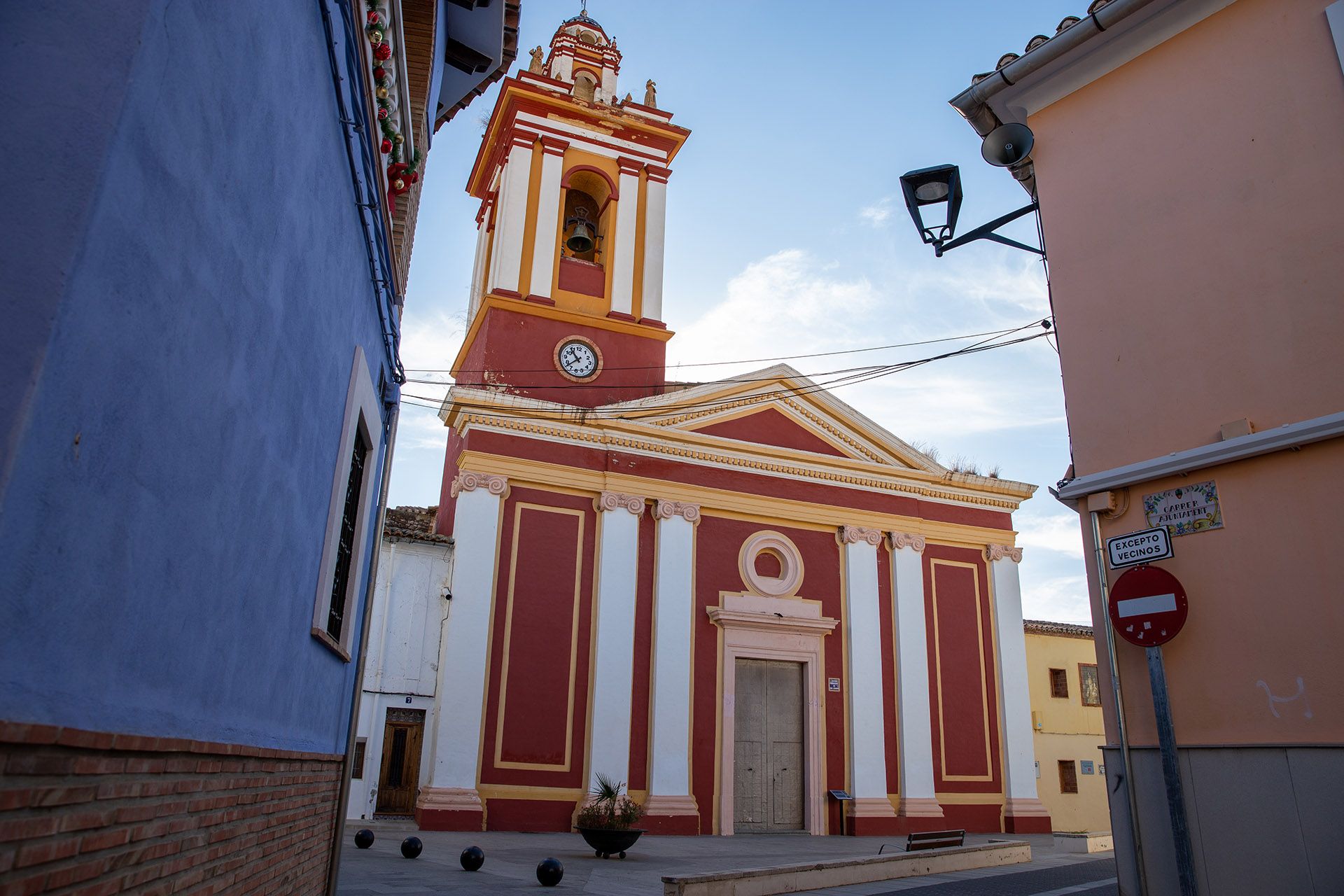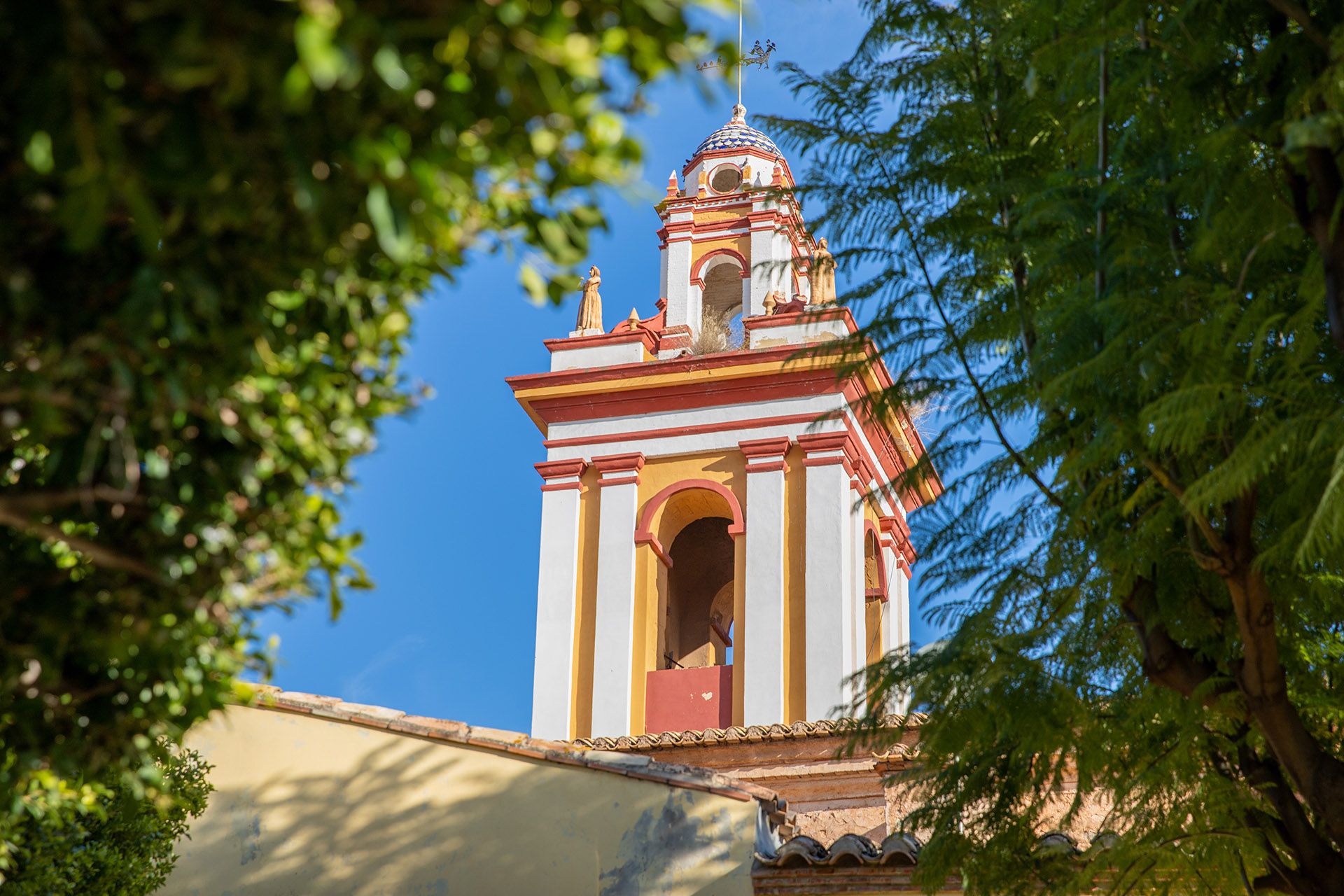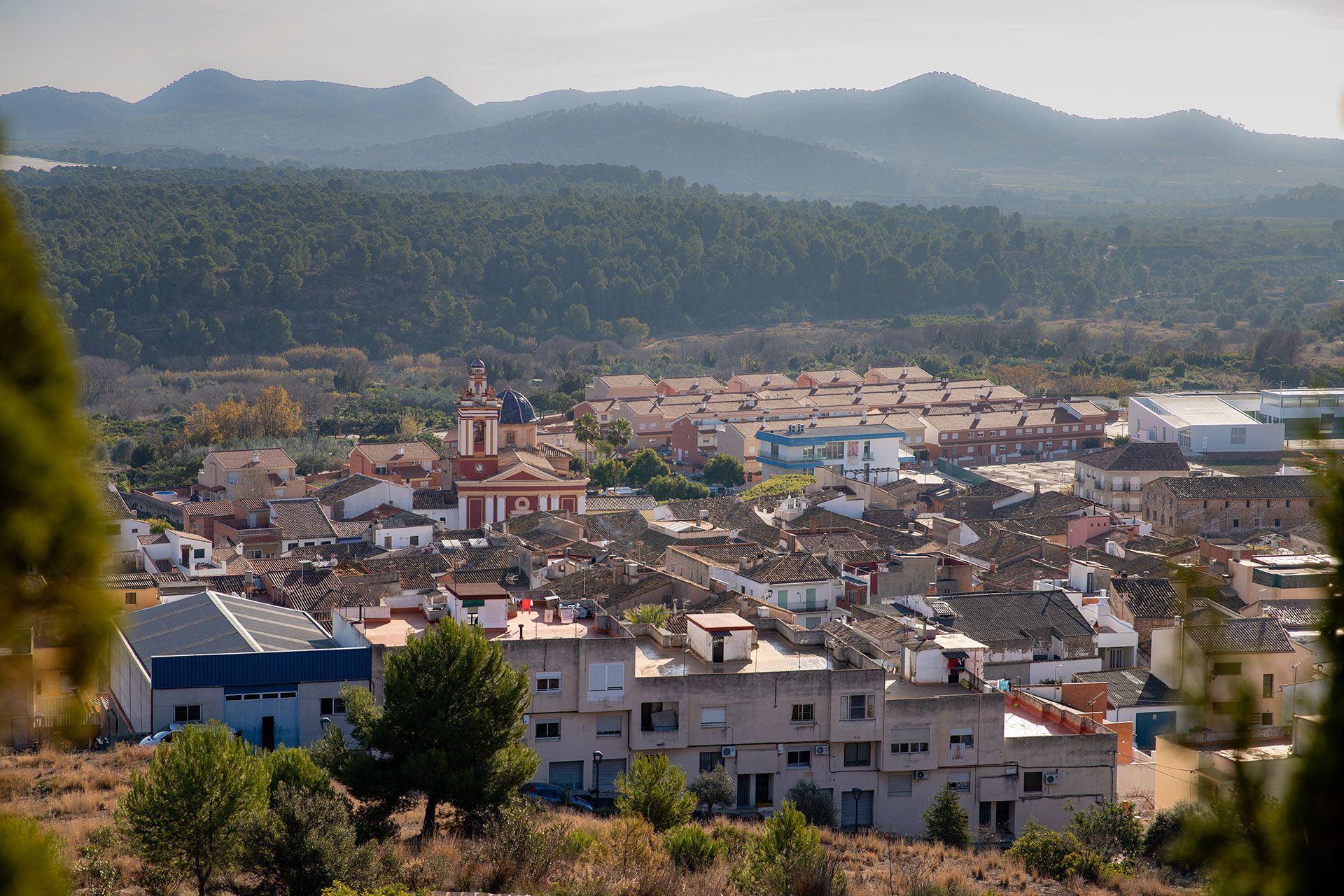Alfara de la Baronia
Located in the northwest of the administrative region of Camp de Morvedre, in the Palancia River Valley. The river divides the municipality into two halves, with the urban centre to the right. The highest mountains in the municipality are “Picaio” (388 m.), “La Costera” (261 m.) and peak known popularly as “Muntanyeta de l’Hermitage” (229 m.), at the foot of which lies the village.
The climate is Mediterranean. The mountainous area of the municipality (365 hectares) is covered with pine forests, which are owned by the municipality; there is thyme, rosemary and some esparto. The village can be reached from Valencia via the A-23, taking the CV-327 after passing through the nearby village of Algimia de Alfara.
The vegetation is typically Mediterranean. Both dryland (almond, carob and olive trees) and irrigation (especially oranges of different varieties) farming is carried out in the municipality. Mention may be made of the winter months, during which the orange trees offer their fruit with an explosion of orange hues. Due to the absence of invading forces, the village of Alfara de la Baronia retained its Roman character up to the arrival of the Moors. James I of Aragon conquered the hamlet of Alfara, which came to form part of the Barony of Torres Torres. In 1270, the Barony was gifted to Betrá de Bellpuig, before being passed on to other noble families. The most important was the Vallterra (1445-1760), and the last lords were the Castellví, who held the village until the extinction of the noble estates in 1780.
Gastronomy:
The highly-varied local cuisine reveals its Arabic influences in its sweets, which are mainly made from flour, eggs and almonds. The majority of the local stews contain vegetables and meat, which is almost always home-reared pork, chicken or rabbit. Alfara’s typical dish is prepared in a cauldron on 9th September and shared by all the villages.
Places of interest:
Mention may be made of the parish Church of Saint Augustine (16th-century). The building has a rectangular layout, consisting of three naves and side chapels arranged on both sides (a total of six), a flat presbytery, polygonal apse, chapel for communions and sacristy. Inside the parish church of St. Augustine we find the pictorial oeuvre of the Morella master, Joaquim Oliet Cruella, created between 1809 and 1816. In response to the drought suffered by the municipality in the late 18th-century, the cistern was built to store fresh water. It was built during the mandate of Count Floridablanca who, following a request for assistance from Alfara for the construction of the water storage tank, exempted the inhabitants of Alfara from paying the “silk tax” and, with the money saved, constructed the cistern. The Hermitage of Our Lady of the Afflicted, most likely built in the 18th-century, is custodian to the statue of Our Lady of the Afflicted, patron saint of the village. The building has a rectangular layout with a single nave with chapels between the buttresses. The most important part of the Hermitage is the front section, which belongs to a style known as “mixtilínia”, of Arabic construction, and one of the first examples of its kind the Valencia Region. It is located between the Sierra Calderona and Sierra Espadán ranges, which offer numerous hiking trails.
Festivities:
The village celebrates its main festivities, held in honour of its patron saints, during the last week of August and first week of September. On 28th August, festivities are held in honour of Saint Augustine, the patron saint of the municipality and the parish. The village’s main festivities are held from 6th to 9th September in honour of Our Lady of the Afflicted, patron saint of the municipality. Its most important day is 8th September, the day before the statue of the Virgin is carried from the hermitage to the parish church. Until recently, the transfer of the statue was accompanied by fires burning on both sides of the road along which the Virgin was carried. However, this traditional was discontinued about 10 years ago.













